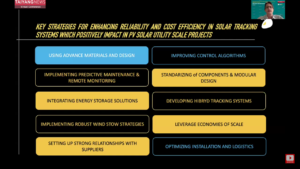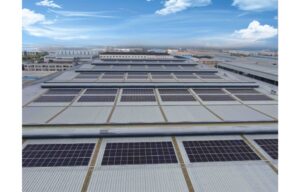- The flexible layout allows for a variable system layout that increases the installed capacity per unit area and improves utilization efficiency, resulting in greater electricity generation benefits
- The adaptability to different application scenarios ensures efficient and reliable operation in a variety of conditions, including freshwater, saltwater, and brackish water environments
- Sungrow’s EGAT Sirindhorn Dam Floating Solar Hybrid Project is the largest of its kind in Thailand and consists of 7 sets, each of which has an output of 8.4 MW
Sungrow FPV, a leading floating PV system solution supplier, showcased its latest solution at Intersolar Europe 2023 in Munich. The solution comes with 3 key advantages – flexibility in layout, adaptability to different application scenarios, and ease of installation and maintenance. The flexible layout allows for a variable system layout that increases the installed capacity per unit area and improves utilization efficiency, resulting in greater electricity generation benefits. The adaptability to different application scenarios ensures efficient and reliable operation in a variety of conditions. The ease of installation and maintenance addresses users’ pain points in these areas while ensuring the high-yield, safe, and long-lasting operation of the floating PV station.
The company’s EGAT Sirindhorn Dam Floating Solar Hybrid Project in Thailand was also a finalist for The smarter E AWARD 2023. The project is a 58.8 MW floating PV system constructed on the Sirindhorn Dam reservoir. It is the largest of its kind in Thailand and consists of 7 sets, each of which has an output of 8.4 MW. The system uses an integrated energy concept to communicate with the local hydropower plant.
The energy management system adjusts the 2 power sources to the fluctuating demand, ensuring that electricity is continuously produced, regardless of the irradiation level. With an annual capacity of around 55 million kWh, the hybrid power plant reduces carbon emissions by about 47,000 tonnes per year.
The text is an excerpt from TaiyangNews New Solar Products Overview H1/2023, which can be downloaded for free here.



